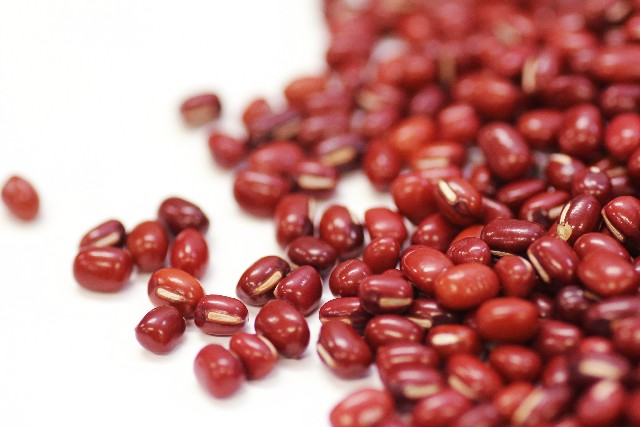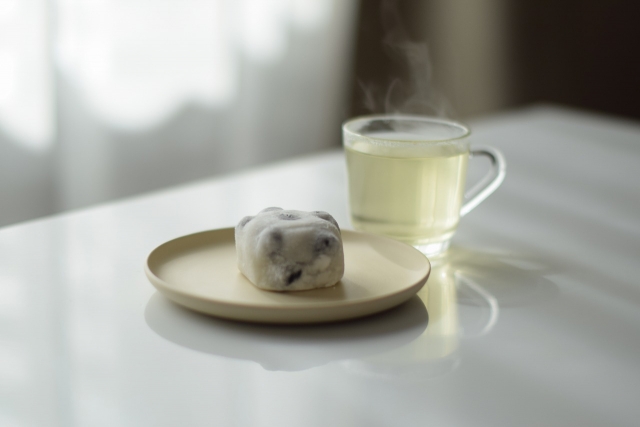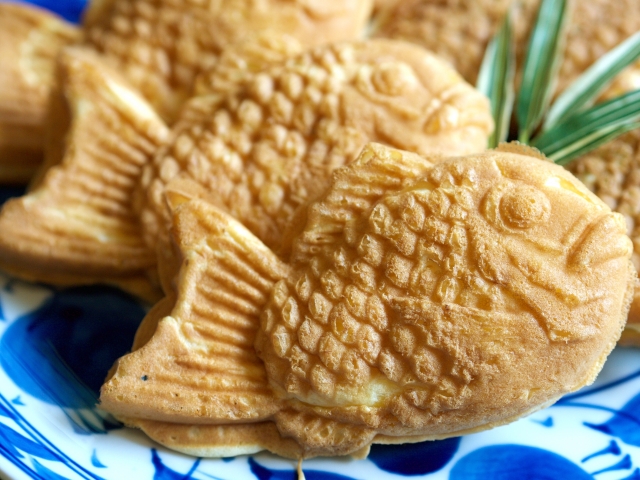Japanese Sweets with Beans
As Japanese cuisine increases its fame all over the world, Japanese sweets are not yet known to many. Our sweets are delicate, colorful, mostly healthy, and fun to look at.
As well as the rest of the world, beans along with rice and wheat have been in our everyday diet long before history was written down. To this date, the Japanese culnary culture cannot be explained without beans. World famous soy sauce is a product of fermented soy beans extract. Miso paste and tofu products are also made from soy. Beans were not processed with sugar until sugar was introduced to Japan in the 12th century. However, sugar was considered precious and it was not something you could get your hands on easily. When tea leaves production became popular around the 12th century, the art of tea brewing style began to form. Along with the Japanese art of tea brewing (or Tea Ceremony, as it is often called), sweets have also began to develop as a tiny snack to be served with tea.

Today, in Japan, you can find a vast variety of food from all over the world. It is not an exaggeration to say that bread, pastries, pies and cakes in Japan are among the best. The Japanese culnary professionals have learned and developed their techniques and succeeded to create a line of international food culture in Japan using Japanese ingredients and traditional Japanese cooking techniques. When you dig deep down into the roots of Japanese cooking, you will find that many of them originate in China and that they have evolved uniquely in Japan adjusting to climate and agriculture. You will also find that at the bottom of all Japanese cooking lies a spirit of Zen, spirit of Buddhism.
Sweets using beans is believed to have begun as a vegetarian dish for monks. High in fiber, good source of protein and other important nutrition, it was ideal for monk’s vegetarian diet. Most popular type of beans used in sweets is tiny red beans called Azuki. Red Azuki beans first appear in a history book in the 8th century Japan. Its red color represented the sun, fire and life (blood), and was believed to have magical powers such as repelling evil spirits. When sugar became more common, beans were braised with sugar to create sweet red beans paste called An or Anko.
Red beans are not the only beans used in sweets. Using its natural colors of green, white and red beans, and its pasty texture, the Japanese have created sweet treats called “Nerikiri”. Nerikiri is often served with Matcha, but it is not just an ordinary snack for tea. It is a marvelous work of culnary art. Nerikiri line up in stores every season with new colorful designs and flavor and entertain the customers in many ways.
As rice being the center of our everyday meal, it has also been traditionally used in sweets. Red bean paste is often combined with rice or rice cakes called Mochi. Red beans paste wrapped in Mochi is called Daifuku, which matches perfectly with strongly brewed green tea. When Japan began to trade with Portugal in the 16th century, European desserts and sweets were introduced to Japan. This was the beginning of a new era in Japanese sweets.

One of the most famous sweets using red bean paste is Dorayaki, bean paste sandwiched in two slices of sweet pancakes. Bun filled with red bean paste is called Anpan. This one is so popular among all generations that a cartoon show which features a superhero character with a head made from Anpan. This superhero is called Anpanman. He fights against villains every day and helps his fellow friends and grasps the heart of toddlers all over Japan.

Another red bean snack that is nationally famous is Taiyaki. “Tai” is a Japanese name for a fish called snapper, and “Yaki” means to bake. It is NOT a baked fish dish or fish filled with red bean paste. Taiyaki is a snapper shaped pancake filled with red bean paste. Dough is poured into a fish shaped iron cast and baked like waffles. Fillings have evolved over the years and now shop owners are competing by being creative in what they use as its fillings as well as the crust. People make long lines to buy freshly made Taiyaki from certain famous shops. They are best eaten hot fresh from the shop!
I was once walking through Tsukiji Fish Market and found a shop that sells Maguroyaki. (Baked Tuna) Instead of using a snapper shaped cast, that shop was using a tuna shaped cast. Perfect for Tsukiji Market!
